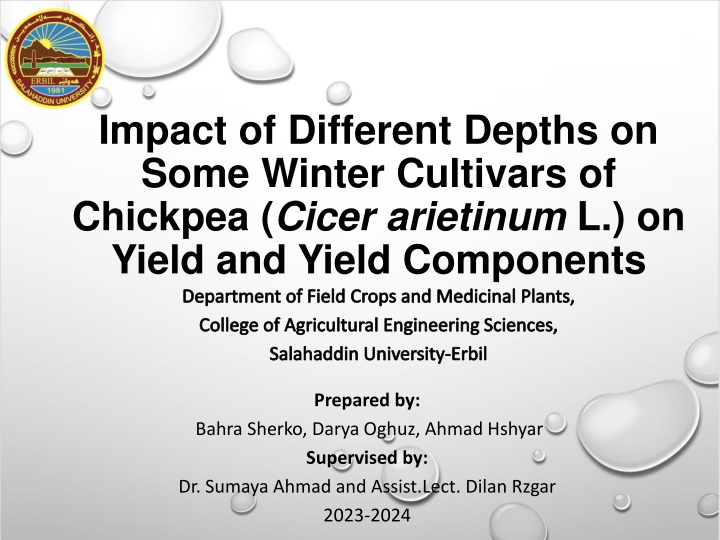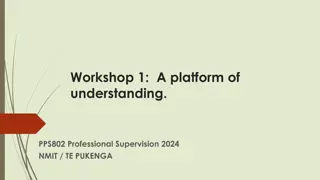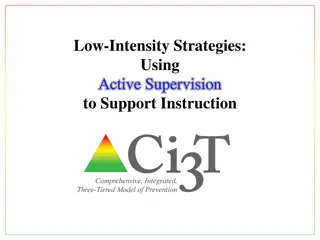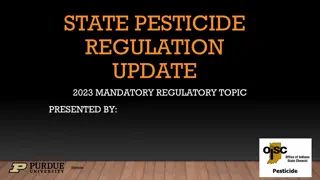
Impact of Different Depths on Winter Chickpea Varieties in Erbil, Iraq
Investigate the impact of sowing depths on growth, yield, and yield components of winter chickpea varieties in Erbil, Iraq. The study conducted at the Grdarasha Research Station of Salahaddin University-Erbil includes details from the Department of Field Crops and Medicinal Plants. Explore the experiment's objectives, methodology, and findings related to the cultivation of Chickpeas.
Download Presentation

Please find below an Image/Link to download the presentation.
The content on the website is provided AS IS for your information and personal use only. It may not be sold, licensed, or shared on other websites without obtaining consent from the author. If you encounter any issues during the download, it is possible that the publisher has removed the file from their server.
You are allowed to download the files provided on this website for personal or commercial use, subject to the condition that they are used lawfully. All files are the property of their respective owners.
The content on the website is provided AS IS for your information and personal use only. It may not be sold, licensed, or shared on other websites without obtaining consent from the author.
E N D
Presentation Transcript
Impact of Different Depths on Some Winter Cultivars of Chickpea (Cicer arietinum L.) on Yield and Yield Components Department of Field Crops and Medicinal Plants, College of Agricultural Engineering Sciences, Salahaddin University-Erbil Prepared by: Bahra Sherko, Darya Oghuz, Ahmad Hshyar Supervised by: Dr. Sumaya Ahmad and Assist.Lect. Dilan Rzgar 2023-2024
Outlines: Introduction Objective of the study Material and Methods Experimental parameters Statistical Analysis Result and Discussion Conclusions Reference
Introduction: (Cicer arietinum L.) rank as the third most important grain legume in the world after dry bean and peaChickpeass. It is a cool-season annual pulse crop, which is grown in tropical, subtropical and temperate regions of the world. Seeds nutritionally are free from various ant nutritional factors,
It possess higher fat content and better fiber digestibility; also a source of protein and calorie for animal feed, has a forage value comparable to other straws commonly used for livestock feed (Emenky and Khalaf, 2010).
Gan et al. (2003) stated that increasing of sowing depth may assist the crop establishment as additional moisture is existing in the subsoil, therefore reducing the possibility of lodging, increasing the variability in the time of emergence. The depth may also improve the survival of Rhizobium inoculated on the seed resulting in better nodulation,
Objective of the study The study is aimed to: Investigate the effect of sowing depths on growth, yield and yield component parameters of some winter varieties of chickpea under rainfall conditions of Erbil Governorate, Iraqi Kurdistan Region.
Material and Methods The experiment was conducted during growing season 2023-2024 at the Grdarasha Research Station of the Agricultural Engineering Sciences College-Salahaddin University- Erbil. The experiment was designed as a factorial within randomized complete block design (RCBD), with three replicates. The seeds were sown manually on 27th of November 2023.
The factors were: 1. Three chickpea cultivars Hazarmerd Sham TH85 2. Three chickpea depths ( 3, 5, and 7) cm.
Experimental parameters 1. Vegetative parameters: Plant height (cm) No. of branches plant -1 Leaf area (cm2) Chlorophyll content (%) 2. Yield Parameters: No. of flower No. of pod plant-1 No. of seed pod-1 1000 seed weight (g) Seed yield (kg ha-1) Biological yield (kg ha-1) Harvest Index (%)
Statistical Analysis The data were statistically analyzed for all of the studied traits according to the analysis of variance (ANOVA) for randomized complete block design (RCBD) using the (IBM SPSS Statistics (Version 19) predictive analytics software. Duncan's Multiple Range Test (1955) was used for means comparison at 0.05 level of significant.
Results and Discussion Table 1. Effect of cultivars on plant height, number of branch, and number of flower Plant height cm No. of branch No. of flower Cultivar 30.81a 8.74a 20.41a Hazarmerd 32.00a 9.74a 18.70a Sham 32.96a 7.51a 16.44a TH85
Table Table 2 2. . Effect of depth on plant height, Effect of depth on plant height, number of branch, branch, and number and number of flower number of of flower Plant height (cm) No. of branch No. of flower Depth 27.22b 8.00a 17.04a D3 32.96ab 8.85a 19.33a D5 35.59a 9.14a 19.19a D7
Table Table 3 3. . Effect of interaction cultivar and depths on plant Effect of interaction cultivar and depths on plant height, height, number of branch, number of branch, and number of flower and number of flower Plant height (cm) 24.55a No. of branch 8.00ab No. of flower 18.78ab Cultivar x Depth D3 Hazarmerd 35.11a 10.22a 25.11a D5 32.77a 31.88a 28.88a 35.22a 25.22a 34.88a 38.77a 8.00ab 11.66a 7.11ab 10.44a 4.33b 9.22a 9.00a 17.33ab 19.33ab 14.89ab 21.89ab 13.00b 18.00ab 18.33ab D7 D3 Sham D5 D7 D3 TH85 D5 D7
Conclusions: From this study it was concluded that the cultivars had no significant affect on plant height, number of branches,and number of flowers. Plant height significantly affected by sowing depth ,the heights value recorded from 7cm depth where is lowest was obtained from 3cm depth , but had no significant effect on number of branches and number of flowers.
The interaction between the cultivar and depth had significant effect on both number of branches and number of flowers , Finally it s Suggests that Hazarmerd on 5cm best of all to sowing .
Reference: Emenky, F.A.O. and Khalaf, A.S., 2010. Effect of Sowing Depths and Seed Size of Some Winter Cultivars of Chickpea(Cicerarietinum L.) on Field Emergence and Vegetative Growth. Research Journal of Seed Science, 3(3), pp.170-177. . Abbas, A.I. and S.S. Murad, 2001. The effect of planting depth and genotype on the production of chickpea in the rainfed area of Iraq. Iraqi J. Agric., 6: 45-53. Saxena, M.C. and K.B. Singh, 1987. The Chickpea. The International Center for Agriculture Research in the Dry Area (ICARDA). C.A.B. International, Wallingford, UK. . Al Obady, R. F., and Al-Noori M. A., 2016. University of Mosul - College of Agriculture. Duncan, O. D., 1955. A methodological analysis of segregation indexes . American Sociological Review, 20(2), 210-217. Gan, Y.T., Miller, P.R. and McDonald, C.L., 2003. Response of kabuli chickpea to seed size and planting depth. Canadian Journal of Plant Science, 83(1), pp.39-46.






















